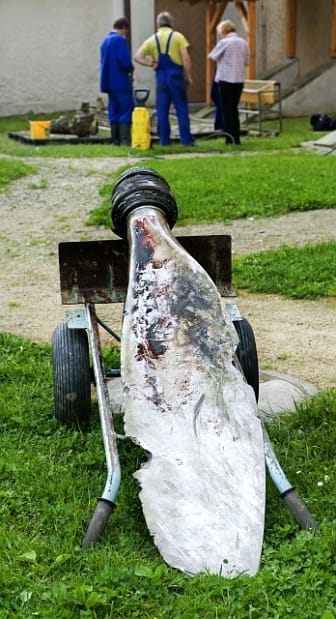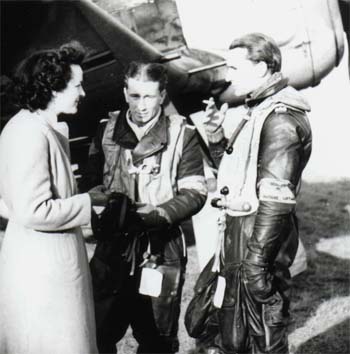Father-son Team of Historians Discovers Long Lost Fw 190 in Rural Czech Republic

In a remarkable feat of historical sleuthing, a father-son team of military historians have located the largely-intact remains of a lost Fw 190, a German WWII fighter shot down over South Bohemia by Allied fighters. The duo from Prague have turned their discovery over to a local museum for safekeeping.
Using a combination of satellite imagery from different periods and the sharp memory of an elderly local woman who witnessed the battle when she was six years old, the duo discovered a Focke-Wulf FW-190 that had been destroyed almost seventy years previously and long lost from the memory of both sides.

The combined ingenuity of a pair of history buffs and the memories of the last-living witness to a great aerial battle have unearthed a rare piece of WWII history and a piece of the history of a notable German fighting ace.
The battle, some 6000 meters over Jindřichův Hradec, midway between Prague and Vienna, was one of the largest aerial engagements in the region to date. American bombers, returning from a mission to destroy a refinery and military installation some 100km to the northeast of the crash site, were separated from their fighter escort and came under attack from a German fighters group specifically tasked with hunting bomber aircraft.

After four of the American B-24 bombers were shot down by the Germans, an American fighter escort arrived that would destroy a dozen of the pursuing German planes. Amazingly, the plane that was located was in such good condition that it could be traced to this battle, its pilot identified and the story of its demise uncovered by historical records.
The pilot, German fighting ace Hubert Engst, was badly injured by return fire while claiming his sixth Allied bomber destroyed and was forced to bail from the ruined aircraft when burning oil entered the cabin. His plane, an FW-190 A-8 named “Yellow 7”, was destroyed on impact and settled up to five meters below the clay that it struck where it remained until Jiří Šašek and his father located the last living witness to its destruction and pinpointed its location.
Engst survived his descent, but the plane was never recovered and settled deep into the ground over the decades that followed, preserving the parts of it that survived the crash remarkably well.

Despite his injuries, “Yellow 7” would not be Engst’s last plane – he recovered and continued to fly for the duration of the war, being shot down once again on Christmas Eve of the same year. He would be shot down a total of four times during his WWII career. According to his son, his tally would increase to as many as 20 four-engine bombers downed on the western front.
At the time, the FW-190 was a cutting-edge machine that gave the Germans a degree of superiority over Allied aircraft until the development of the P-51 Mustang (it is uncertain what type of aircraft shot Engst’s plane down, but the Mustangs were common by the time of the engagement and their superior maneuverability helped turn the tides of aerial combat in WWII.

The find was turned over to the Museum of Jindřichův Hradec where director Jaroslav Pikal oversaw its excavation and recovery. Two machine guns, part of the engine, the cockpit and the propeller were exhumed from the clay that had covered them since 1944 and prepared for exhibition at the museum. According to Pikal, the site holds one of the best-preserved aircraft crash sites of the era.
Another Article From Us: The US Air Force B-29 Origins of the Russian Tupolev TU-4
In a country that struggles to claim the physical history of WWII from a cottage industry of treasure hunters and private collectors, the Museum’s receipt of this find is a major victory for military historians.
